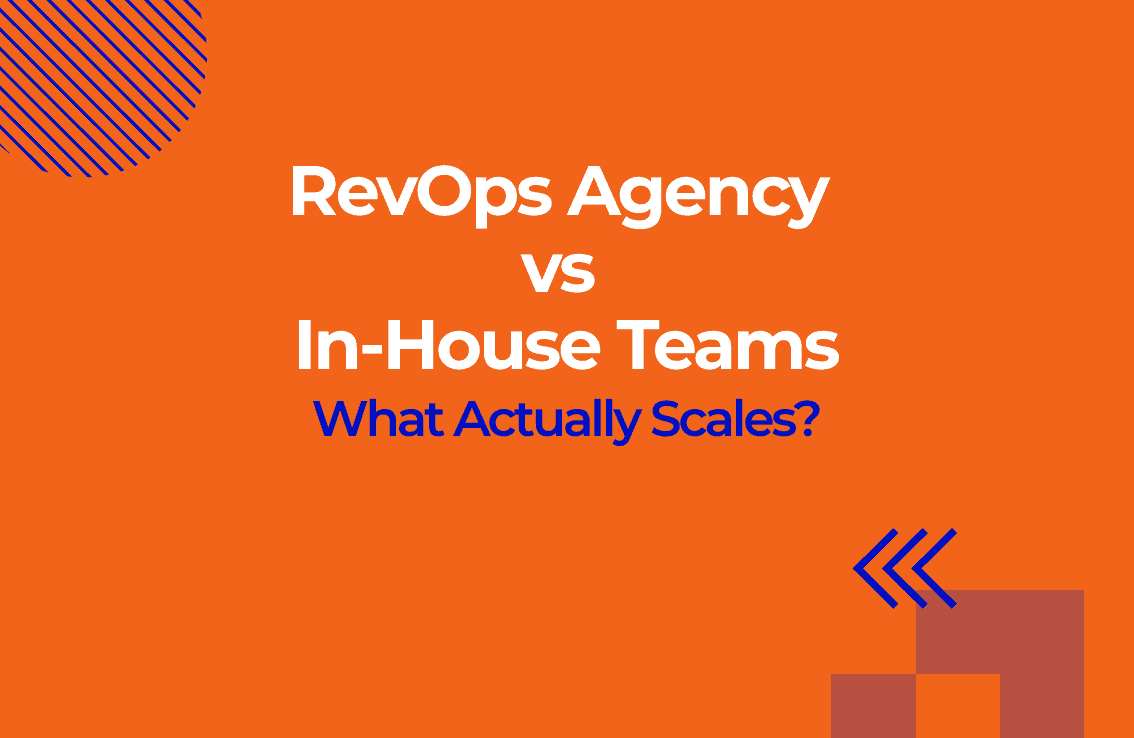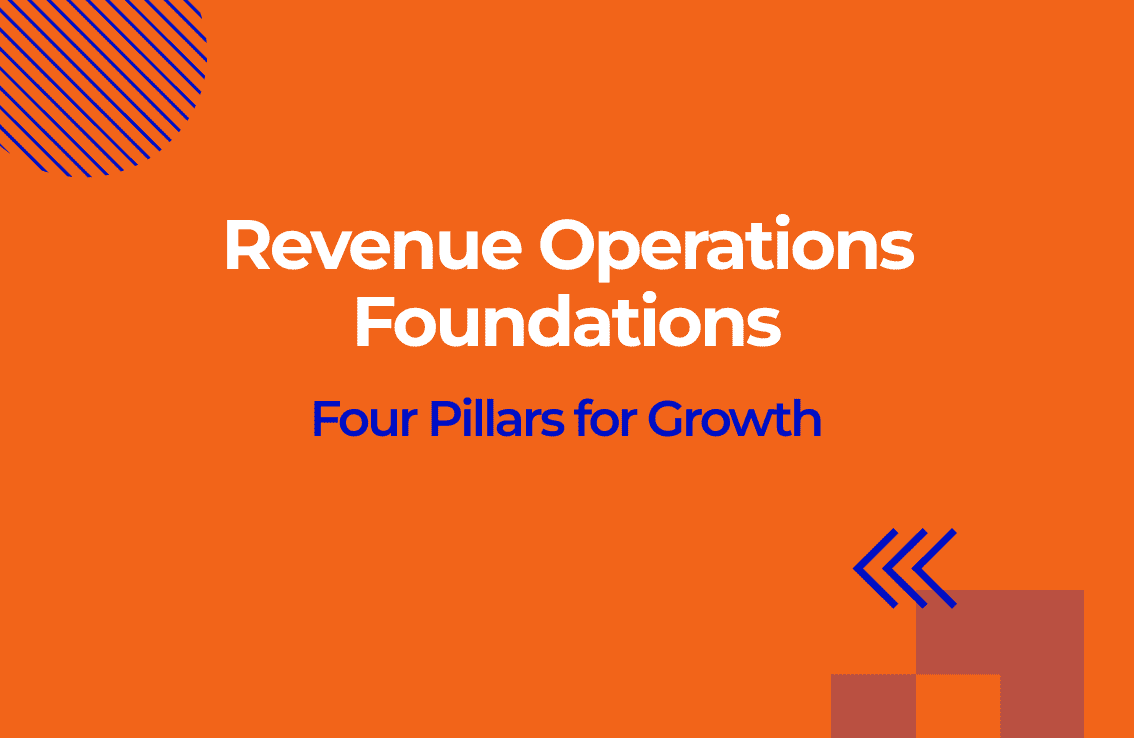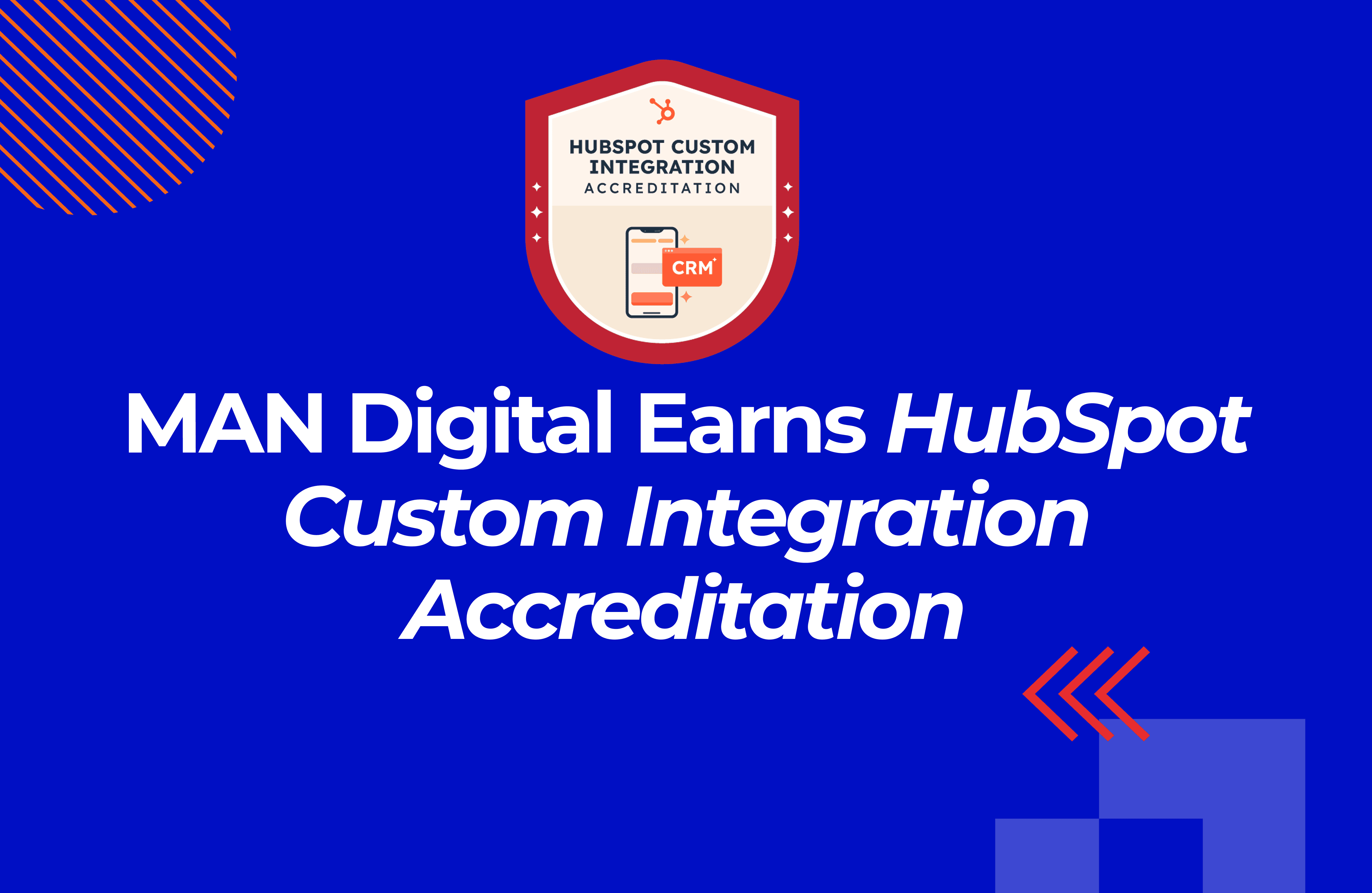How to Build a Revenue Operations Framework in HubSpot?
The revenue operations (RevOps) framework helps your company be more efficient by aligning processes, people, technology, and data. This framework brings together go to market teams to drive revenue.
Table of Contents
It consists of four elements:
- Process (revenue generation and unified, streamlined business processes for efficiency)
- People running those processes
- Technology (tools used in your processes)
- Data (accurate data you gather in your business)

Here is a snippet from one of our webinars, where Joe Aurilia, SVP of Operations at Cyware, explains how the three elements in revenue operations are connected.
Why do you need it?
- Connected processes for your marketing, sales, and customer success
- Your company’s employees know their departmental roles.
- The tools you use are integrated, and users are familiar with their use.
- The data is accurate, enabling informed forecasts and valuable insights into the customer journey through high-quality analytics and decision-making.
Aligning sales, marketing, and customer success teams is a core benefit of a revenue operations framework, breaking down silos and improving collaboration for revenue growth.
How does it look in HubSpot?
- HubSpot helps you run everything by unifying data from all departments, allowing you to manage an end-to-end customer journey.
- The integration and analysis of customer data across departments ensures seamless communication and strategic insights.
- So you don’t miss data because of poor integrations or users not knowing how to utilize different tools.
Here’s how it looks in HubSpot.
Marketing:
- Runs all inbound campaigns with one tool.
- All data is structured for easy ROI viewing and handover to sales.
- Sales and marketing teams collaborate for better lead handoff and campaign execution.
- CRM unifies marketing tools and data for a customer-centric approach.
Sales
- Has a clear pipeline and deal desk to close deals faster.
- Data is collected on sales follow-up, quotes, reporting, and forecasting.
- Handover and onboarding are done without missing any details.
- Sales teams use unified data and processes to improve performance and forecasting accuracy.
- CRM integrates sales tools for better collaboration.
Customer Success
- Has all customer interaction data, making higher-quality onboarding easier.
- Tracks all customer interactions and communication, making it easier to prevent churn.
- Discovers upselling and cross-selling opportunities focused on what matters.
Finance:
- Handover to finance is fast.
- Payment can be made directly using native CPQ.
- Recurring payments can be done directly in HubSpot.
With AI and HubSpot's latest tools, you can overcome common RevOps challenges:
- Data Hub & Studio for centralized analytics
- Smart CRM for intelligent automation
- Breeze Agents for streamlined workflows
Impact:
- Predictable revenue growth through unified data
- Faster, data-driven decision making
- Scalable efficiency across teams
The Evolving RevOps Landscape in 2025
We’re shifting towards hybrid human–AI teams as the norm. There’s no need for large revenue operations teams anymore. We just need small teams with the right tools.
This shift, combined with AI tools, leads to increased operational efficiency by streamlining workflows and reducing manual tasks.

HubSpot tools for RevOps teams:
- Data Studio: AI workspace with AI agents, warehouse/sync integrations, smart fields, automated data collection and analysis, and data quality that turns blended data into datasets for Segments, workflows, and reporting.
- Smart CRM: Auto-enriched records, automated data insights, and flexible views that raise adoption and pipeline accuracy.
- Marketing Hub (Segments + Marketing Studio): AI-built audiences, marketing automation features, and campaign canvas for faster, personalized launches.
- Sales Hub (Prospecting Agents + smarter meetings): AI prep and automated prospecting that increase selling time.
- Commerce Hub (AI CPQ): Context-aware quotes and native payments that shorten cycles and improve revenue data.
Integrated project management capabilities within these tools help coordinate RevOps initiatives, facilitate communication, and improve efficiency across departments.
Challenges Without a RevOps Framework
Operating without a structured RevOps framework guarantees failure modes that kill growth and margins. Core issues:
- Siloed data and systems: Teams use mismatched tools and spreadsheets—no one trusts the numbers.
- Manual, inconsistent processes: Handoffs fail, reporting drags, and one-off hacks become standard, undermining sales operations and creating bottlenecks in the sales process.
- No shared accountability or measurement: Wins go undocumented, so success can't be replicated or scaled.
|
Symptom |
Daily reality |
Business impact |
|---|---|---|
|
Siloed data |
Marketing and Sales disagree on MQL/pipeline; CS misses deal context. |
Bad calls, blame games, lost upsell/cross-sell |
|
Manual reporting |
Weekly Frankenstein spreadsheets; late board decks |
Delayed reactions; extended sales cycles; bloated OpEx |
|
Broken handoffs |
Leads dumped without context; onboarding skips essentials |
Leaked revenue; early churn spikes |
|
Inconsistent processes |
Reps freelance; no playbooks or SLAs |
Wild forecasts; erratic win rates; slow ramps; inefficient sales process |
|
No single source of truth |
Duplicates, junk fields, and clashing MQL/SQL/ICP definitions. |
CRM abandonment, wasted budgets, and off-target campaigns |
|
Limited scalability |
Wins hinge on heroes; tools don't connect. |
Stalled growth; rising CAC; shrinking margins |
Bottom line: Scattered data and unmeasured processes destroy scale, leading to longer sales cycles and inefficient sales operations.
Building a Revenue Operations Team With Frameworks in Mind
Revenue operations represent a strategic imperative for achieving market-leading growth and sustainable competitive advantage.
Executive teams see 19% faster revenue growth and 15% improvement in sales productivity compared to siloed approaches. (Forrester)
This cross-functional alignment transforms marketing, sales, and customer success into a cohesive revenue engine that drives measurable business impact and positions your organization for board-level growth targets.
Strategic revenue operations demand clear executive accountability and defined cross-functional governance.
Appointing a revenue operations leader with direct board reporting creates the operational framework necessary for eliminating departmental inefficiencies.
Operational gaps, such as delays between order and activation, billing errors, and lack of CPQ governance, are significant causes of revenue leakage, often hidden in plain sight.
Addressing these inefficiencies holistically through revenue operations can accelerate growth and reduce lost revenue, ensuring that revenue potential is fully realized.
(KPMG)
A RevOps executive leader or a RevOps agency (like ours) should aim to bring:
- Marketing attribution clarity
- Sales conversion optimization
- Customer success retention
Aligned with investor expectations while driving the data-driven decision-making that separates market leaders from competitors.
Technology infrastructure investment in revenue operations delivers quantifiable ROI through operational efficiency gains and accelerated decision-making capabilities.
Organizations integrating revenue technology stacks report 23% reduction in sales cycle length and 31% improvement in customer acquisition costs. (Revenue Operations Alliance)
This strategic technology foundation enables real-time market responsiveness, providing executives with the visibility required for informed resource allocation and competitive positioning.
Revenue operations excellence drives three critical board-level outcomes:
- Accelerated revenue growth
- Higher customer lifetime value
- Operational scalability that supports market expansion
Organizations that implement integrated revenue operations functions achieve improved customer engagement and double-digit revenue growth (Deloitte Digital)
Phased Implementation: Baseline to Advanced Automation
Here’s a simple three-phase roadmap to guide your move from scattered processes to a self-optimizing revenue engine.
The key components of a successful phased implementation include process mapping, technology integration, team alignment, and continuous measurement.
Each phase builds on the last, with clear deliverables and measurement checkpoints to track progress and areas for iteration. RevOps frameworks provide the structure needed for ongoing process improvement and alignment across teams.

Phase 1: Baseline & Data Integration
Goal: Establish a single source of truth and standardized workflows.
Key actions:
- Discovery audit of current GTM processes and handoffs across Marketing, Sales, CS, and Finance.
- Map revenue workflows and SLAs; document “as-is” vs. “to-be.”
- Connect all essential sources to the HubSpot Data Hub; define canonical objects and IDs.
- Use Data Studio to blend spreadsheets, apps, and warehouse tables into reusable datasets for Segments, workflows, and reporting.
- Run Data Quality to deduplicate, standardize fields, and enforce validation rules.
- Track annual recurring revenue (ARR) and recurring revenue as baseline KPIs to monitor growth and retention.
Deliverables:
- RevOps Process Map + RACI
- Unified Data Model + governed fields
- Core dashboards for pipeline, funnel, and lifecycle
Checkpoint metrics (4–6 weeks):
- Pipeline hygiene (stale deals, stage compliance) ↑
- Baseline funnel conversion and cycle time established
- Sales forecasting accuracy to ensure reliable pipeline and revenue projections
When integrating data, ensure the collection of customer feedback to inform process improvements and optimize renewal cycles.
Phase 2: AI Integration & Process Design
Goal: Embed AI into daily execution and ensure repeatability.
Key actions:
- Marketing: Build segments and campaigns in Marketing Studio; roll out AI-powered email creation for speed and personalization; leverage automated data from integrated systems to optimize campaigns and targeting.
- Sales: Deploy Prospecting Agents and smarter meeting prep; define lead routing, qualification, and follow-up SLAs; utilize automated data analysis to refine sales strategies and improve conversion rates.
- Service: Launch Customer Agents for support and onboarding; standardize ticket flows and success playbooks.
- Commerce: Use CPQ and native payments for faster quote-to-cash
- Document SOPs, definitions (MQL, SQL, ICP), and governance.
These improvements enable teams to make data-driven decisions and drive business growth by aligning processes and leveraging automation.
Deliverables:
- Department playbooks + AI usage guidelines (Assistants)
- SLA-backed workflows (routing, alerts, escalations)
- Role-based dashboards with Smart CRM views
Checkpoint metrics (6–10 weeks):
- Speed: Lead response time ↓, quote cycle time ↓
- Consistency: SLA adherence ↑, playbook adoption ↑
- Effectiveness: SQL rate ↑, win rate ↑, NPS/CSAT ↑
Phase 3: Advanced Automation & Continuous Improvement
Goal: Make the system self-optimizing and compounding.
Key actions:
- Predictive routing and next-best-action workflows that adjust to real-time signals.
- Loop marketing across Express → Tailor → Amplify → Evolve for every campaign to continuously test, personalize, scale, and refine.

- Self-optimizing workflows using performance thresholds and Smart Insights to trigger tests, reallocations, or playbook changes.
- Automation empowers revenue-generating teams by streamlining repetitive tasks, allowing them to focus on high-impact activities that drive results.
- Quarterly business reviews (QBRs) to evaluate pipeline velocity, forecast accuracy, CAC/LTV, retention, and expansion—then prioritize the next automation sprints.
Deliverables:
- Optimization backlog + test plans
- Embedded predictive models in routing and scoring
- Updated governance and data quality rules
Checkpoint metrics (quarterly):
- Forecast accuracy ↑, pipeline velocity ↑
- CAC ↓, payback period ↓, NRR ↑
- Automation coverage ↑ (share of touches handled by workflows/agents)
- Continuous optimization focuses on increasing revenue by enhancing efficiency and effectiveness across all processes.
HubSpot Technology Stack for RevOps
HubSpot Technology Stack for RevOps (2025)
It depends on your GTM motion, but the backbone remains consistent: the Data Hub is the operational core, Smart CRM is the system of work, and the functional Hubs execute tasks. The Chief Revenue Officer (CRO) plays a critical role in overseeing the technology stack and revenue operations, ensuring alignment across sales, finance, and compliance to drive efficient revenue growth.
The win isn’t “more tools”—it’s a unified, AI-assisted stack that cuts manual work, shortens cycle times, and improves forecast accuracy.
Use the stack below to standardize data, automate handoffs, streamline business processes, and provide leaders with a trustworthy, real-time view of revenue.
|
Component |
What it does |
Revenue impact |
2025 highlights |
|---|---|---|---|
|
Data Hub (replaces Operations Hub) |
Unifies and orchestrates data across apps and warehouses, streamlining business processes |
Single source of truth → reliable funnels and forecasts |
Two-way warehouse sync (Snowflake, BigQuery), programmable automation, Data Quality Command Center |
|
Data Studio |
AI-assisted data prep and dataset modeling |
Faster reporting and segmentation without SQL bottlenecks. |
Spreadsheet-like modeling, smart fields, replace legacy datasets. |
|
Data Quality Command Center |
Automated cleanup, standardization, and deduplication |
Better routing and conversion; fewer junk/dupe records |
Health monitoring, auto-fixes, policy enforcement |
|
Smart CRM |
Flexible, auto-enriched system of record |
Higher rep adoption; cleaner pipelines; fewer shadow sheets. |
Flexible CRM Views, conversational/intent enrichment, Smart Insights |
|
Marketing Hub (Segments + Marketing Studio) |
Audience building and campaign orchestration |
Faster launches; higher SQL rate with personalization |
AI-built audiences, campaign canvas, and AI email creation |
|
Sales Hub (Prospecting + Meetings) |
Prospecting automation and meeting prep |
More selling time; stronger early-stage conversion |
Prospecting Agent, self-prepping meetings, playbooks + tasks |
|
Service Hub (Customer Agent) |
AI-assisted support and onboarding |
Shorter time-to-value; improved retention and expansion. |
Customer Agent, ticket workflows, feedback loop |
|
Commerce Hub (AI CPQ + Payments) |
Quotes, subscriptions, and native payments, including management of recurring revenue through subscriptions and renewals |
Shorter quote-to-cash; cleaner revenue data for FP&A. |
AI-assisted CPQ, recurring payments, native invoicing |
|
Breeze Agents & Assistants |
Specialized GTM agents/assistants |
Automates low‑value work; scales ops without headcount. |
Use-case agents in marketing, sales, and service |
|
Connectors |
Integrations with other data apps. |
Keeps analytics and activation in sync; |
Bi-directional data flow; |
How to activate this stack:
- Stabilize your foundation: Start with Data Hub and Data Quality, setting canonical IDs and validation rules.
- Publish governed datasets in Data Studio for Segments, scoring, and role-based dashboards.
- Pilot one AI use case per team (Prospecting Agent, Customer Agent, or AI CPQ) tied to one KPI: speed-to-lead, first response time, or quote cycle time.
Metrics and KPIs for Revenue Operations
Strategic revenue operations measurement drives competitive advantage through precise KPI tracking that directly impacts your bottom line and market position.
Want to see revenue metrics in action? Watch as our CEO, Przemek Orlikowski, joins Nikos Ntirlis from Databox to break down practical strategies for improving B2B revenue metrics.
Executive-level visibility into revenue growth, operational efficiency, and customer satisfaction enables:
- Data-driven resource allocation
- Revenue process optimization
This delivers measurable ROI to stakeholders and board members.
Critical performance indicators include:
- Revenue growth trajectories
- Customer acquisition cost optimization,
- Customer lifetime value maximization
- Sales cycle compression
- Conversion rate enhancement.
Strategic metrics encompass average revenue per user expansion, retention rate improvements, and customer satisfaction benchmarks that position your organization ahead of market competitors.
Unified performance frameworks aligned with revenue objectives ensure all revenue-generating functions contribute to shared strategic goals and investor expectations.
Conclusion: Building Your RevOps Framework for 2025 & Beyond
The throughline is simple: unify teams around one revenue strategy, execute a phased roadmap, and let AI + automation compound your gains.
Key points:
- Align Marketing, Sales, CS, and Finance to one plan, one funnel, and shared definitions.
- Standardize processes and SLAs for repeatable, not hero-driven, work.
- Use clean, connected data to your advantage: Data Hub as the core, Data Studio for modeling, Smart CRM as the system of work.
- Use Breeze Agents and automation to eliminate manual steps and speed up handoffs.
- Continuously measure: pipeline velocity, forecast accuracy, CAC/payback, NRR.
Next steps:
- Assess your current state: run a 2-week RevOps baseline audit (workflows, data health, SLAs).
- Prioritize the top 3 gaps and select one AI pilot per team tied to a single KPI (e.g., speed-to-lead, first response time, quote cycle time).
- Build a 90-day plan using three phases: stabilize data and processes → embed AI in execution → automate optimization and reviews.
HubSpot now offers the Data Hub, Data Studio, and Data Agents—so teams move faster with cleaner data and clearer decisions. The future is hybrid human–AI. The companies that operationalize it in HubSpot will win.
.png)


